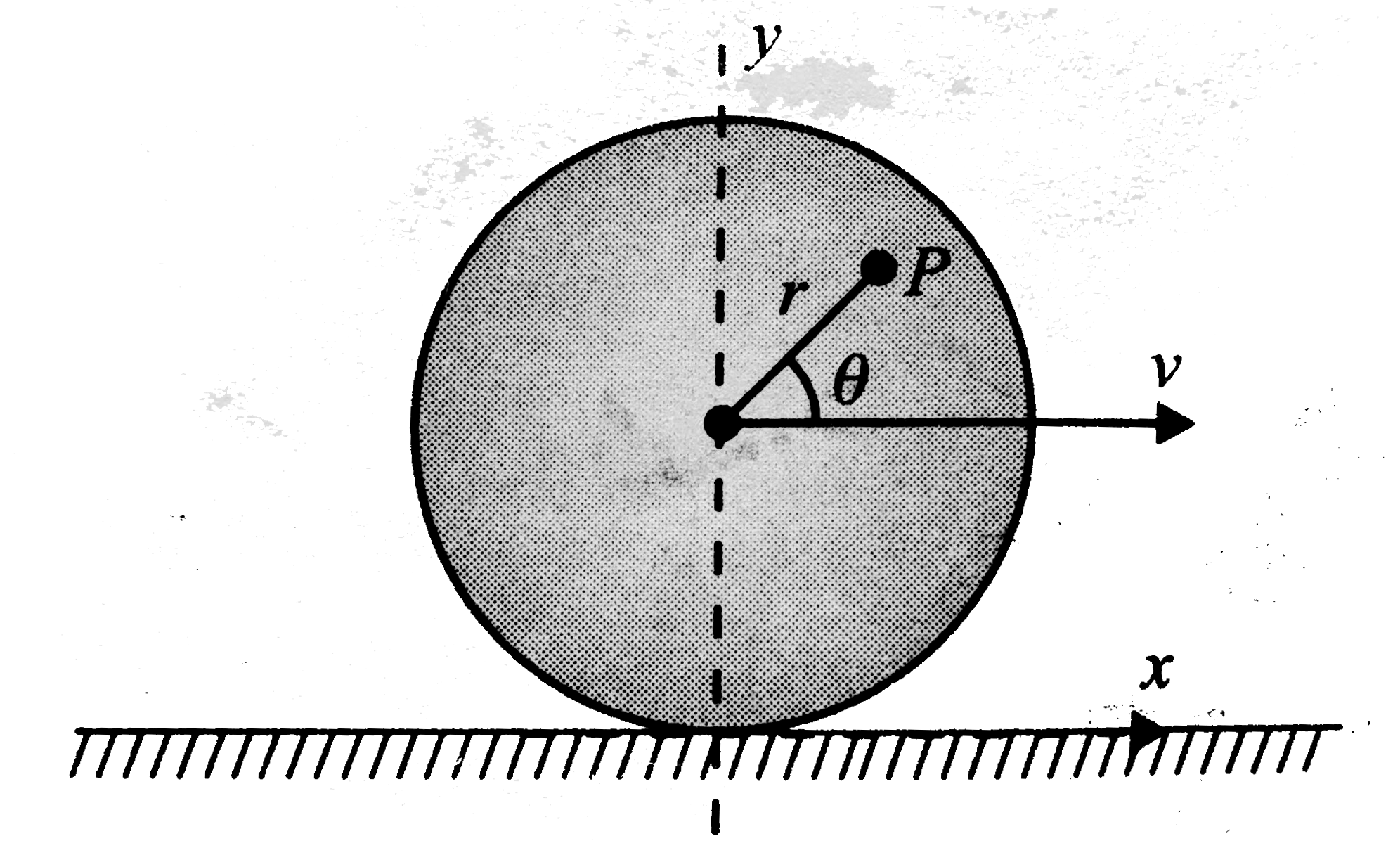A disc rotating about its axis with angular speed is placed lightly {without any transnational push) on a perfectly friction-less table. The radius of the disc is R. What are the linear velocities of the point A, B and C on the disc shown in the Fig. B 7:2.60 ? Will the disc roll in the direction indicated ?

(a) Velocity of A=ω0R, which is in the same direction as the arrow.
(b) Velocity of B=ω0R, which is in a direction opposite to the arrow
(c) Velocity of C=ω0R/2, which is the direction of the arrow
(d) The disc will not roll in the direction indicated as the table is perfectly frictionless and without friction a body cannot roll.
Similar Questions
A disc rotating about its axis with angular speed ω0 is placed lightly (without any translational pull) on a perfectly frictionless table. The radius of the disc is R. What are the linear velocities of the points A,BandC on the disc shown in Fig. Will the disc roll in the direction indicated ?

View SolutionA disc of radius 10 cm is rotating about its axis at an angular speed of 20 rad/s. Find the linear speed of
a. a point on the rim,
b. the middle point of the radius.
View Solution
Knowledge Check
A disc rotating about its axis with angular speed ω0 is placed lightly (without any translational pull) on a perfectly frictionless table. The radius of the disc is R. What are the linear velocities of the points A,BandC on the disc shown in Fig. Will the disc roll in the direction indicated ?
 AvA>vB>vCBvA<vB<vCCvA=vB<vCDvA=vB>vC
AvA>vB>vCBvA<vB<vCCvA=vB<vCDvA=vB>vC
A disc is rotated about its axis with a certain angular velocity and lowered gently on a rough inclined plane as shown in Fig., then

View SolutionA disc is rotated about its axis with a certain angular velocity and lowered gently on a rough inclined plane as shown in Fig., then

View SolutionA disc of radius R rolls without slipping at speed v along positive x-axis. Velocity of point P at the instant shown in Fig. is

View SolutionAs shown in the figure, a disc of mass m is rolling without slipping a angular velocity ω. When it crosses point B disc will be in :

View Solution
the disc of the radius r is confined to roll without slipping at A and B if the plates have the velocities shown, determine the angular velocity of the disc.
View Solution
A disc of radius R has linear velocity v and angular velocity ω as shown in the figure. Given υ=rω find velocity of point A, B, C and D on the disc.
View SolutionA charge Q is uniformly distributed over the surface of non - conducting disc of radius R. The disc rotates about an axis perpendicular to its plane and passing through its centre with an angular to its plane and passing through its centre of the disc. If we keep both the amount of charge placed on the disc and its angular velocity to be constant and vary the radius of the disc then the variation of the magnetic induction at the centre of the disc will br represented by the figure:
View Solution
